Kalanchoe alticola
Kalanchoe alticola Compton
Family: Crassulaceae
Common names: coin kalanchoe, coin-leaved kalanchoe (Eng.), panniekalanchoe (Afr)
Introduction
Kalanchoe alticola is a small shrubby succulent with rounded leaves and striking yellow flowers in autumn and winter, growing at high altitudes near Barberton and in Eswatini.
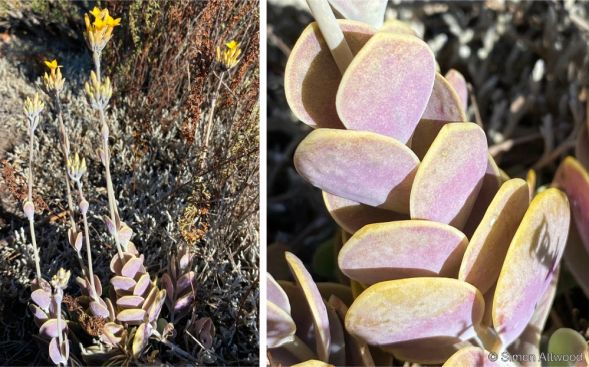
Description
Description
Kalanchoe alticola is a striking small succulent shrublet that grows up to 250 mm. It arises from a shallow rootstock running horizontally near ground surface and curves upwards into an aerial stem. The stem is typically light green to distinctively purplish-green, tends to lean and often becomes tangled for support. This plant species has decumbent branches that form a clasping rosette at the base, with thick, fleshy, opposite leaves covered in whitish powder on both sides. The leaves are oval to obovate and distinctively missing a petiole . The leaves are small measuring between 9–15 mm long, green on the upper side and reddish to purple on the under side, margins are entire, reddish to purple and have blunt tips. The leaves at the base are much larger than those arising on the upper part of the stem.
Kalanchoe alticola has flowers that are light yellow or sulphur yellow to light orange and appear from late autumn to early winter. The inflorescence is about 50 mm in diameter, erect, with few flowers that are either sparsely packed or sometimes closely packed. All of the parts of the flower are covered with distinctive waxy bloom. The flowers sit nicely on long, robust pedicels that are about half the length of the inflorescence. The sepals are 5 mm long, lanceolate, nearly separate and fused at the base, clasping the yellowish-green corolla tube which is inflated and enlarged at the bottom. The corolla tube is 8–12 mm long, rounded, slightly 4-angled, light green at the bottom, turning yellow to orange towards the top. It has lobes that are 2–4 mm long, lance-shaped, spreading, recurved, and tapering to a point at the apex. The flowers close at night and open during the day. The stamens are fully included, with 3–4 mm long filaments that are delicate and located near the middle of the corolla tube. The pistil consists of 4 carpels that are 4–5mm long with scales.
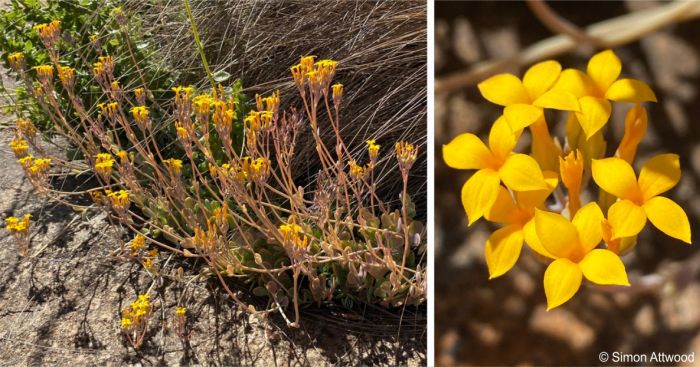
Conservation Status
Status
Kalanchoe alticola was assessed as Rare in 1996 in the Red Data List of Southern African Plants but is currently assessed as Data Deficient – Insufficient Information (DDD) in the Red List of South African Plants, because there are no precise sites known for this species in South Africa and herbarium collections are old, and surveys are needed to determine the status of this species. In Eswatini it occurs in an area heavily transformed by sugarcane plantations.
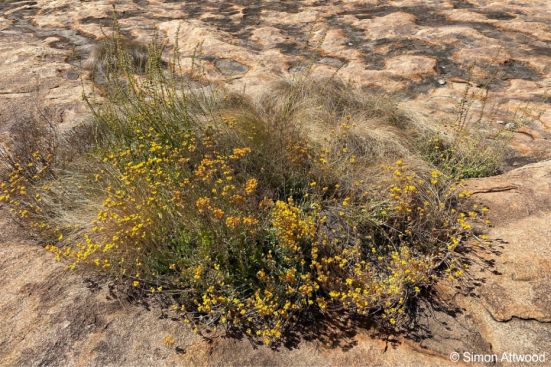
Distribution and habitat
Distribution description
Kalanchoe alticola is endemic to southern Africa, it occurs in South Africa and in Eswatini where it occurs in a habitat that is under threat due to being heavily transformed by sugarcane. This species is found in the Barberton Centre of Plant Endemism (BCPE) situated in the north eastern part of the southern African region. It mostly grows on top of cliffs that are 900-1 800 m above sea level. It thrives in shallow peaty soils on granite rocks or in rock crevices.
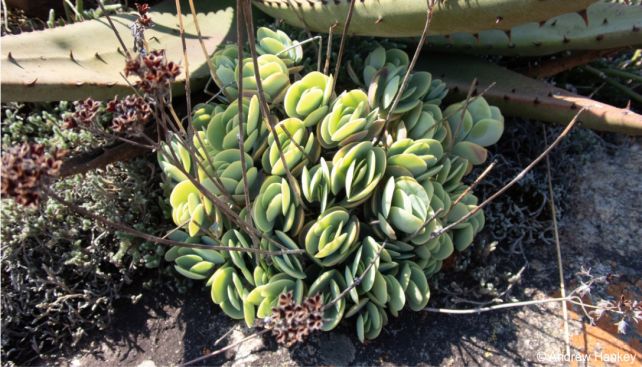
Derivation of name and historical aspects
History
The genus name Kalanchoe was first used by the French botanist Michel Adanson, in 1763. The name is derived from Chinese phonetic transcription term Kalan Chauhuy meaning ‘that which falls and grows’, another explanation for the name relates to words used in ancient Indian, kalanka meaning ‘stain or rust’ and chaya meaning ‘shine or glossy’, referring to the reddish and shiny leaves of many plants in the genus.
The species name is derived from Latin words altus meaning ‘high’ and colere meaning ‘to dwell’ referring to the high elevations where it occurs. This species was described in 1975 by Professor Robert Harold Compton who served as the second Director of the National Botanic Gardens of South Africa. In 1967, Professor Compton had also described Kalanchoe decumbens which was later reclassified as Kalanchoe rotundifolia however it has since been reinstated as K. decumbens. Another species that was described by Professor Compton is the recently reinstated Kalanchoe montana formerly known as Kalanchoe luciae subsp. montana.
Kalanchoe alticola is one of 27 Kalanchoe species indigenous to the southern African region known as the Flora of Southern Africa (FSA), a floral region that includes Botswana, Eswatini, Lesotho, Namibia and South Africa. Out of all the known Kalanchoe species found within the FSA, Kalanchoe laciniata is the only one recorded in Namibia.
Kalanchoe alticola can easily be confused with K. rotundifolia but K. alticola has slightly larger flowers, the length of the calyx lobes which are normally longer than 4 mm while with K. rotundifolia, the lobes are never longer than 2 mm.
Kalanchoe is a genus of about 120 species of succulent plants that belong in Kalanchooideae a subfamily within Crassulaceae , known as stonecrop family. It is the third largest genus recognised in the Crassulaceae.
In recent years the number of Kalanchoe species in South Africa has increased due to the reinstatement of previously described species and new species being described. This is reflected on the SANBI Red List of South African Plants which currently has 13 South African species, and approximately 13 new species, including the already mentioned K. decumbens, have been added to the genus.
Several Kalanchoe species not listed on the SANBI Red List of South African Plants include the most recently discovered species such as Kalanchoe steyniae, occurring in KwaZulu-Natal (KZN), Kalanchoe deliae, occurring in the Barberton Centre of Endemism and Kalanchoe krigeae found in Wolkberg Centre of Endemism, both in Mpumalanga Province. Kalanchoe stearnii was reinstated and accepted as a distinct species after being separated from K. rotundifolia. In 2022, additional species such as K. gideonsmithii, named after Professor Gideon Smith, was described in KZN within the Maputaland-Pondoland Region of Endemism, while Kalanchoe klopperae, which thrives in rich, humic soil, and semi-shaded environments in Mpumalanga, Gauteng and Eswatini, was also distinguished from K. rotundifolia
Kalanchoe benbothae which was described in 2021 and is endemic to northeastern of KZN, is also found in the Maputaland-Pondoland Region of Endemism. In 2019, the endangered Kalanchoe crouchii was described in Mpumalanga, where it occurs in the Wolkberg Centre of Endemism. Kalanchoe hirta a bushveld savanna species that prefers drier habitat was reinstated in 2018 after it was sunk under Kalanchoe crenata. In 2016 and 2017, Kalanchoe winteri and Kalanchoe waterbergensis were recorded in Wolkberg Centre of Endemism. Additionally, Kalanchoe leblanciae which was primarily recorded in Mozambique has been confirmed to occur in KZN.
In South Africa kalanchoes grow primarily in the summer-rainfall and savanna region, and are absent in the succulent-rich winter-rainfall and arid regions of the country.
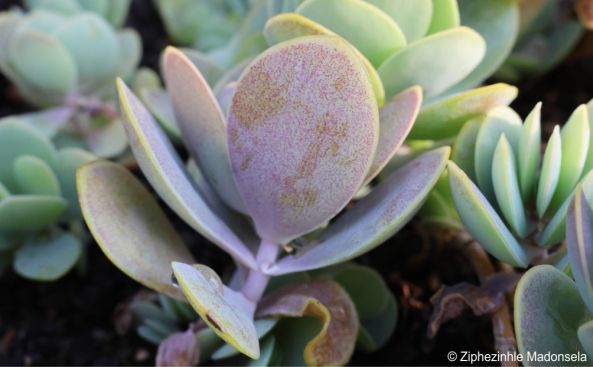
Ecology
Ecology
Kalanchoe alticola has the ability to survive in harsh conditions, helped by its succulent leaves and stems that store water, the greyish powder that reflects heat and keeps the plant cooler, and the angle at which it presents its leaves reduces the surface area that is exposed to the sun which further enables the plant to keep cool and conserve water. The fine seeds are easily dispersed by wind and are able to survive and grow in rocks and rock crevices.
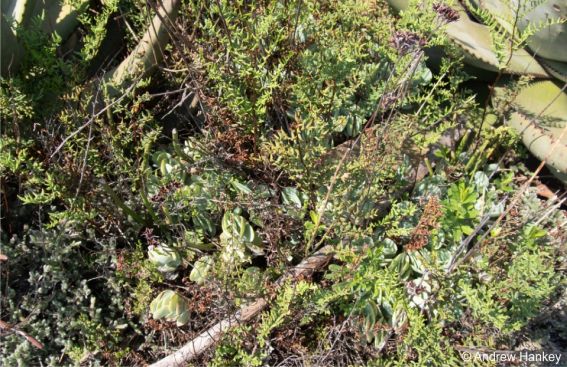
Uses
Use
There are no recorded medicinal and cultural uses for this species. Kalanchoe alticola is an ideal plant for rockery gardens and containers where it can be mixed with other miniature succulents. Its minimal watering requirement makes it a good plant for waterwise gardens.
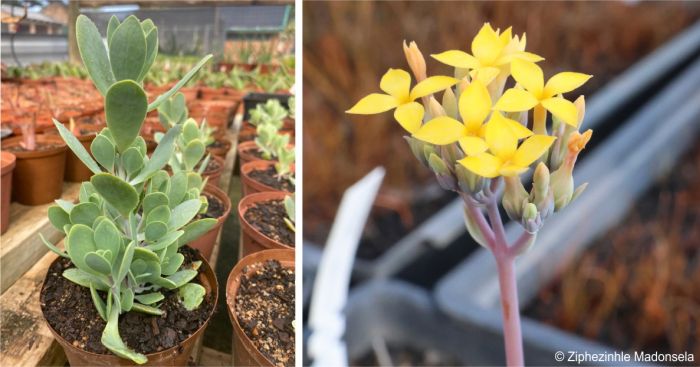
Growing Kalanchoe alticola
Grow
Kalanchoe alticola is an easy to grow plant. It can be propagated by seeds and cuttings.
Seeds are small and fine and should be sown in spring or summer and treated like other succulents seeds. Sow seeds in a shallow tray, make sure that they are evenly distributed over the surface of a sandy growing mixture and lightly covered with sand using sand sifter to avoid burying the seeds too deep which may cause seeds not to germinate. Germination of seeds takes about 3 weeks. New seedlings should be allowed to grow to be large enough for handling because new seedlings are quite fragile. When the seedlings are ready to be transplanted they should be transferred to individual pots. Place the pots in a lightly shaded place that gets enough sunlight.
Propagation through cuttings is the easiest way of propagating this species, as it roots easily even when rooting hormone is not used. Even the fallen leaf is able to form roots provided that it falls on the moist growing mixture.
Grow mature plants in a well-drained soil, keep in a dappled shade under taller vegetation that can still allow sunlight through the canopies.
In regions outside of its natural habitat it can be grown in containers.
Over-watering should be avoided. Overwatered K. alticola plants leaves become swollen and the green leaves become yellowish green.
References
- Amos, R. 2023. Caring for Kalanchoe plants: a complete guide to cultivating and caring for Kalanchoe varieties. Independently Published.
- Attwood, S. 2024. Observations of Kalanchoe alticola, Ehlanzeni, Mpumalanga. iNaturalist. Online. https://www.inaturalist.org/observations/213773975 & https://www.inaturalist.org/observations/213775747.
- Burgoyne, P.M., Burrows, J.E., Lötter, M. & Von Staden L. 2007. Kalanchoe alticola Compton. National Assessment: Red List of South African Plants. http://redlist.sanbi.org/species.php?species=3823-2.
- Christoffels, J. 2016-09. Kalanchoe sexangularis N.E. Br. (Crassulaceae). PlantZAfrica. Online. http://pza.sanbi.org/Kalanchoe-sexangularis.
- Crouch, N., Figueiredo, E. 2022. Kalanchoe gideonsmithii (Crassulaceae subfam. Kalanchooideae), a further new species endemic to the Maputaland-Pondoland Region of Endemism in KwaZulu-Natal, eastern South Africa. Phytotaxa 566: 233-241.
- Crouch, N., Figueiredo, E.& Smith, G. 2016. Occurrence of the little-known Kalanchoe leblanciae Raym.-Hamet (Crassulaceae) confirmed in South Africa. Bradleya 34:70-76.
- Hankey, A. 2023, Observation of Kalanchoe alticola, Ehlanzeni, Mpumalanga. iNaturalist. Online. https://www.inaturalist.org/observations/193864289.
- Linder, H.P. & Kurzweil, H. 1999. Orchids of Southern Africa. A.A. Balkema, Rotterdam.
- Manning, J. 2013. Field guide to wild flowers of South Africa.Penguin Random House, South Africa.
- Onderstall, J. 1996. Wild flower guide, Mpumalanga and Northern Province. DynamicAd, Nelspruit. Page 158.
- Smith, G. & Crouch, N. 2021. Kalanchoe benbothae, a new southern African species endemic to KwaZulu-Natal in the Maputaland-Pondoland Region of Endemism. Phytotaxa 521: 105-112.
- Smith, G. & Figueiredo, E. 2017. The taxonomy of Kalanchoe brachyloba Welw. ex Britten (Crassulaceae). Bradleya 35:2-14.
- Smith, G. & Figueiredo, E. 2022. Kalanchoe klopperae, a southern African species newly distinguished from K. rotundifolia. Novon, A Journal for Botanical Nomenclature 30:104-109.
- Smith, G. 2021. Reinstatement of Kalanchoe decumbens Compton (Crassulaceae subfam. Kalanchooideae), an endemic species from eastern southern Africa. Bradleya 39:163-171.
- Smith, G. 2022. A review of the ecology and natural history of Kalanchoe (Crassulaceae subfam. Kalanchooideae) in southern Africa. Bradleya 40:161-184.
- Smith, G. 2023. Kalanchoe deliae (K. [subg. Kalanchoe] sect. Raveta; Crassulaceae subfam. Kalanchooideae), a new species from the Barberton Centre of Endemism in northeastern southern Africa. Phytotaxa 632:131-142.
- Smith, G., Figueiredo, E. & Crouch, N. 2018. The taxonomy of Kalanchoe hirta Harv. and K. crenata (Andrews) Haw. (Crassulaceae), and reinstatement of K. hirta as a eistinctive, endemic species from southern and south-tropical Africa. Haseltonia 24:40-50.
- Smith, G. & Figueiredo, E. 2019. Kalanchoe crouchii Gideon F.Sm. & Figueiredo (Crassulaceae), a new species from the dolomites of the Wolkberg Centre of Endemism, Mpumalanga Province, South Africa. Haseltonia 84.
- Smith, G., Figueiredo, E. & Oberlander, K. 2022. A review and update of the conservation status of Kalanchoe species (Crassulaceae subfam. Kalanchooideae) in the Flora of Southern Africa region. Bradleya Special 2022.
- Smith, G.F, & Crouch, N. 2024. Kalanchoe steyniae (Crassulaceae subfam. Kalanchooideae; K. [subg. Kalanchoe sect. Raveta] ser. Rotundifoliae), a new, small-growing, shrubby species from eastern southern Africa. Phytotaxa 659:268-276.
- Smith, G.F. & Figueiredo, E. 2023. Kalanchoe krigeae, a new, small-growing species from northeastern South Africa split off from K. rotundifolia. Phytotaxa 603:280–288.
- Smith, G.F., Crouch, N.R. & Figueiredo, E. 2017. Field guide to succulents in southern Africa. Struik Nature, Cape Town.
- Smith, G.F., Figueiredo, E. & Van Wyk, A.E. 2019. Kalanchoe (Crassulaceae) in southern Africa: classification, biology, and cultivation. Elsevier Science, United Kingdom.
Credits
Ziphezinhle Madonsela
Lowveld National Botanical Garden
January 2025
Acknowledgements: the author thanks Simon Attwood and Andrew Hankey for providing images for this article, and Professor Gideon Smith for confirming the number of Kalanchoe species in South Africa.
Plant Attributes:
Plant Type: Succulent
SA Distribution: Mpumalanga
Soil type: Sandy, Loam
Flowering season: Autumn, Winter
PH: Acid, Neutral
Flower colour: Yellow
Aspect: Full Sun, Morning Sun (Semi Shade), Afternoon Sun (Semi Shade)
Gardening skill: Easy
Special Features:
Horticultural zones
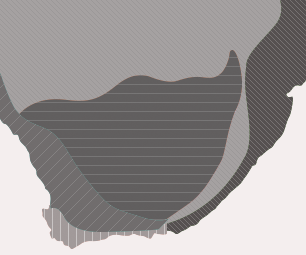








Rate this article
Article well written and informative
Rate this plant
Is this an interesting plant?
Login to add your Comment
Back to topNot registered yet? Click here to register.